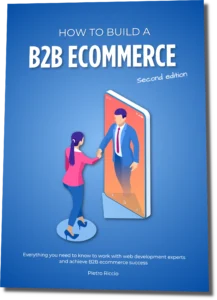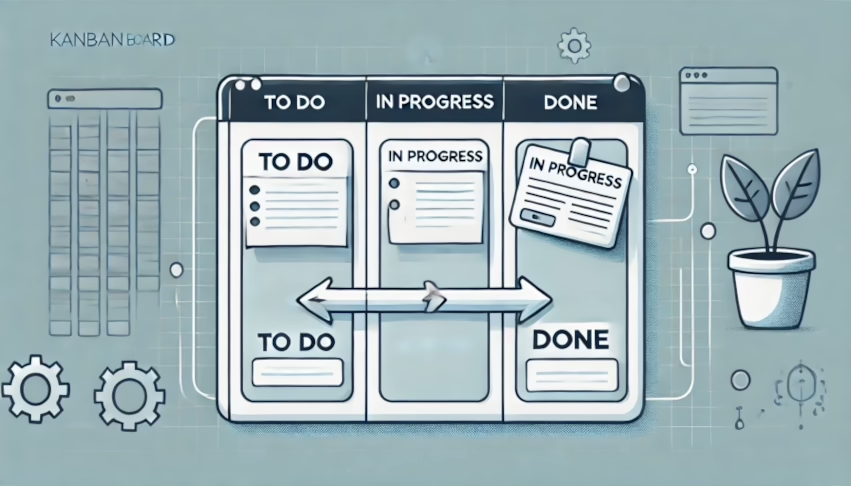The cost of a professional e-commerce website varies based on requirements such as integrations, number of products, customizations, and much more.
A simple website, with few modifications and customizations, can cost a few thousand British Pounds / Euros / USD. A website with advanced features, unique pages, complex integrations, multilingual support, etc., can cost up to several tens of thousands.
In the context of a professional business e-commerce, we exclude those free platforms, often designed for the budget and needs of an individual.
The first step in determining the cost of a website is to create a solid technical specifications document.
The first step for a small business looking to build an e-commerce website is creating a specifications document that includes:
- Type of customers they sell to.
- Type and quantity of sold products.
- Data sources.
- Technologies to integrate with.
- Requirements such as logistics and payments.
- Budget.
- And so on—the complexity of the document varies from case to case.
Once the specifications document is complete, the process usually continues with:
- Sending the document to a considerable number of agencies.
- Requesting further information from a shortlisted, smaller group of agencies.
- Selecting the best candidate.
In addition to creating a technical specifications document and selecting an agency, you will need to:
- Prepare the content: photos, descriptions, etc.
- Manage the development: coordinate developers, test the site before and after launch.
- Configure modules: shipping, payments, reCAPTCHA, etc.
- Update the sales and support teams: provide training on using the platform.
The best way to choose an e-commerce platform for a small or medium-sized enterprise is to start with a research based on the requirements identified in the specifications document.
If a platform or one of its plugins efficiently meets a critical and complex requirement, it may be reasonable to choose that platform over others.
However, the second step is still to discuss with the agencies selected for building the site. Agencies, specialists, and e-commerce consultants are in the best position to recommend one platform over another. It is important to remember that if an agency primarily works with platform X and not with platform Y, they might propose using platform X, even if platform Y could be a more suitable choice.
The best platform for a business e-commerce site is the one that meets not only the current project requirements but also future ones, ensuring scalability.
If the project requires great stability, quick implementation times, and can tolerate less customization and potentially higher fixed costs for licenses, a SaaS (Software-as-a-Service) platform might be the right choice. It is better to avoid overly simple solutions that could be limiting and instead aim for a leader like Shopify.
On the other hand, if the project requires a lot of customization and the company wants to fully own and control the site, accepting more maintenance and complexity, an open-source platform (whose source code is free and public) like Magento might be more suitable.
I strongly advise against opting for fully custom solutions, as this would strictly tie you to the developers who created them.
Also, avoid ultra-cheap or free platforms, which could prove to be extremely limiting.
According to BuiltWith data, as of October 9, 2024, in the UK there are:
- 171,610 WooCommerce e-commerce sites
- 216,659 Shopify e-commerce sites
- 221,994 Wix e-commerce sites
- 9,983 OpenCart e-commerce sites
- 9,711 Magento e-commerce sites
However, many of these sites may be inactive.
For example, WooCommerce, the free plugin that transforms a WordPress site from a blog into an e-commerce store, is so easy to install that it is often added to sites that are later abandoned. Many of those 171,610 websites may be inactive.
In contrast, Magento is more complex, and consequently, it is reasonable to expect that those who have installed it are actually using it, indicating that many of those 4,000 sites are probably active.
An e-commerce site based on a SaaS platform, with a standard design, can be ready to sell simple products within a few hours. Naturally, this represents a rare edge case, seldom applicable in a business context, and only if products, content, and settings such as payments and shipping are few and simple.
A more complex project, requiring extensive customization, can take several months.
Development agencies will provide you with an approximate estimate of the time needed to complete your project, but much will also depend on your ability to provide precise and timely guidance and answers to the inevitable questions that will arise as the project progresses, as well as on any change requests made during the course of the work that were not accounted for in the original time estimate.
A web development agency primarily deals with design, programming, and integration.
A digital marketing agency focuses on aspects such as advertising, PPC campaigns, and SEO optimization.
Sometimes, the roles of the two agencies overlap, for example, in the case of technical SEO. Both aspects are essential to ensure success in the world of e-commerce.
In the context of a professional e-commerce website, “maintenance” refers to the periodic or occasional work of fixing and updating the platform, modules/plugins, and site integrations.
Typically, maintenance is more frequent for sites based on open-source platforms compared to SaaS platforms, although it remains possible for both.
A website with many customizations will likely require more maintenance than one with fewer modifications.
Agencies often offer maintenance contracts with a fixed number of monthly hours, with the option to add extra hours if necessary. In this case, the cost will be determined by the number of hours and the agency’s rate.
Maintenance usually does not include recurring costs such as hosting and licenses. Depending on the contract, maintenance hours can also be used for additional development work (i.e. adding new features), optimization, or adding new content.
If you have further questions, you can find more information on our blog, such as:
Or, contact us for a consultation. We specialize in supporting small businesses embarking on their journey into the world of e-commerce.




